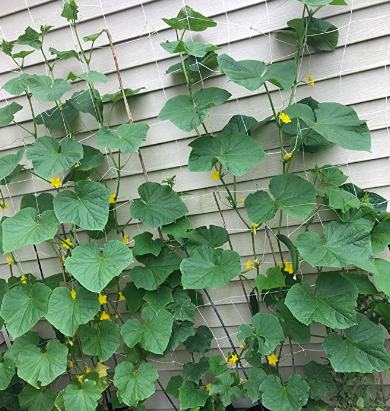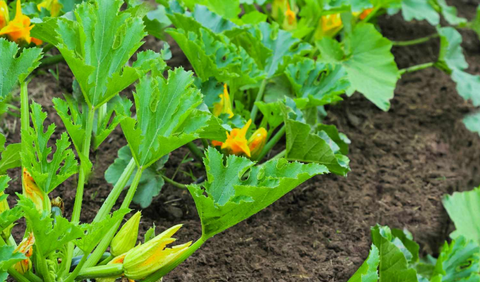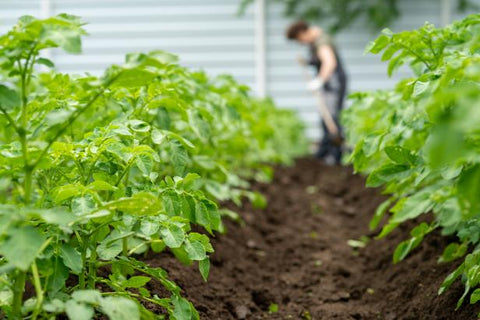Basil, with its aromatic leaves and culinary versatility, is a favorite herb among gardeners. Cultivating a thriving basil patch in your backyard not only adds beauty to your garden but also provides an abundant supply of fresh herbs for culinary adventures. In this guide, we'll explore the steps to creating your own basil haven, from selecting the right location to enjoying the fruits of your labor. The following content also has some reference value for raised garden beds.

Selecting the Right Location
Sunlight requirements
Basil thrives in full sunlight, requiring at least six to eight hours of direct sunlight daily. Choose a location in your yard that receives ample sunlight throughout the day to ensure robust growth and flavorful foliage.
Soil quality and drainage
Well-draining soil is essential for basil, as it dislikes soggy conditions that can lead to root rot. Test your soil's drainage by digging a hole and filling it with water. If the water drains within a few hours, your soil is suitable for basil cultivation.
Space considerations
Consider the space available in your garden when selecting a location for your basil patch. Ensure that there is enough room for your basil plants to spread and grow without overcrowding. Adequate spacing allows for proper air circulation and reduces the risk of disease.
Choosing Basil Varieties
Sweet basil (Ocimum basilicum)
The classic sweet basil variety is a popular choice for its traditional basil flavor, making it ideal for pesto, sauces, and salads. Its bright green leaves and sweet aroma add a delightful touch to any dish.
Thai basil (Ocimum basilicum var. thyrsiflora)
Thai basil offers a unique flavor profile with hints of anise and licorice, adding depth to Southeast Asian cuisines. Its purple stems and flowers make it a visually striking addition to your garden.
Purple basil (Ocimum basilicum var. purpurascens)
Purple basil, with its dark purple leaves and intense flavor, adds a dramatic flair to dishes. Use it as a garnish or in salads to impart a rich, basil flavor with a colorful twist.
Lemon basil (Ocimum × africanum)
Lemon basil combines the bright citrusy notes of lemon with the classic basil flavor, creating a refreshing and aromatic herb. Use it to infuse a burst of citrus flavor into beverages, desserts, and savory dishes.
Starting from Seeds vs. Transplants
Pros and cons of starting from seeds
Starting basil from seeds allows for a wider selection of varieties and cultivars, giving you greater control over your basil patch. However, it requires patience and time as seeds take longer to establish than transplants.
Pros and cons of using transplants
Using transplants provides a head start in the growing process, allowing you to enjoy fresh basil sooner. However, transplanting basil requires careful handling to avoid damaging the delicate roots.
Tips for successful seed starting or transplanting
Whether starting from seeds or transplants, ensure that your basil plants receive adequate water, sunlight, and nutrients during the establishment phase. Keep the soil consistently moist but not waterlogged, and protect young seedlings from harsh weather conditions.
Planting and Spacing
Proper planting depth
When planting basil seeds or transplants, ensure that they are planted at the appropriate depth. For seeds, cover them lightly with soil, and for transplants, plant them at the same depth as they were in their containers.
Ideal spacing between basil plants
Space basil plants at least 12 to 18 inches apart to allow for ample air circulation and prevent overcrowding. Proper spacing reduces the risk of disease and ensures that each plant receives adequate sunlight and nutrients.

Companion planting with basil
Basil thrives when planted alongside compatible companion plants such as tomatoes, peppers, and oregano. Companion planting not only maximizes space but also enhances soil fertility and deters pests.
Watering and Feeding
Watering requirements for basil
Basil prefers consistently moist soil but can be sensitive to overwatering, which can lead to root rot. Water your basil plants deeply but infrequently, allowing the soil to dry out slightly between waterings. Avoid wetting the foliage to prevent fungal diseases.
Importance of proper drainage
Proper drainage is crucial for basil, as it helps prevent waterlogged soil and root rot. Ensure that your planting area has well-draining soil and consider amending heavy clay soils with organic matter to improve drainage.
Fertilization needs and techniques
Basil is a relatively light feeder, requiring minimal fertilization to thrive. Incorporate a balanced organic fertilizer into the soil at planting time and top-dress with compost or aged manure throughout the growing season to provide essential nutrients for healthy growth.
Mulching and Weed Control
Benefits of mulching in a basil patch
Mulching helps conserve soil moisture, suppress weeds, and regulate soil temperature, creating an optimal growing environment for basil. Organic mulches such as straw, shredded leaves, or grass clippings also enrich the soil as they break down.
Types of mulch suitable for basil
Choose organic mulch materials that decompose slowly and provide long-lasting benefits to your basil patch. Avoid using dyed or treated mulches that may contain harmful chemicals. Natural mulches such as straw, hay, or shredded bark are ideal for basil cultivation.
Strategies for effective weed control
Weeds compete with basil for water, nutrients, and sunlight, hindering its growth and productivity. Implement proactive weed control measures such as hand-pulling weeds, applying mulch, or using organic weed barriers to keep your basil patch weed-free.
Pest Management
Common pests that affect basil
Basil is susceptible to attack by various pests, including aphids, whiteflies, and spider mites. These pests can damage the foliage and stunt the growth of basil plants if left unchecked.
Natural and organic pest control methods
Combat basil pests using natural and organic pest control methods to minimize harm to beneficial insects and pollinators. Introduce predatory insects such as ladybugs or lacewings, or use homemade insecticidal soaps and neem oil sprays to deter pests.
Preventative measures to keep pests at bay
Prevent pest infestations by practicing good garden hygiene and implementing preventative measures. Avoid overcrowding plants, remove debris and weeds, and rotate basil crops to reduce pest pressure and promote a healthy growing environment.
Disease Prevention
Common diseases of basil plants
Basil is susceptible to fungal diseases such as powdery mildew, downy mildew, and fusarium wilt, as well as bacterial diseases like basil downy mildew. These diseases can weaken basil plants and reduce their productivity if not addressed promptly.
Practices to prevent basil diseases
Prevent basil diseases by planting disease-resistant varieties, providing adequate air circulation, and avoiding overhead watering. Remove and destroy infected plant material, and disinfect gardening tools to prevent the spread of pathogens.
Early detection and treatment options
Monitor your basil plants regularly for signs of disease, such as yellowing or wilting leaves, white powdery growth, or dark spots. Early detection allows for prompt treatment with organic fungicides or cultural practices to mitigate disease spread and save your basil crop.
Pruning and Harvesting
Importance of regular pruning for basil plants
Regular pruning is essential for promoting bushy growth and preventing basil plants from becoming leggy or top-heavy. Pinch off the growing tips of young basil plants to encourage branching and stimulate new growth.
Techniques for proper basil pruning
Use sharp scissors or pruning shears to make clean cuts when pruning basil plants. Remove any yellowing or damaged leaves, as well as any flower buds that may develop to divert energy back into leaf production.
Tips for harvesting basil leaves for optimal flavor
Harvest basil leaves regularly to encourage continued growth and ensure a fresh supply of flavorful foliage. Harvest in the morning when the essential oils are most concentrated, and avoid harvesting more than one-third of the plant at a time to maintain its vigor.
Extending the Growing Season
Strategies for prolonging basil growth into the fall
Extend the growing season of your basil by protecting it from early frosts and chilly temperatures. Cover your basil plants with row covers or cloches to trap heat and create a microclimate, allowing them to thrive well into the fall months.
Protecting basil plants from frost damage
Basil is sensitive to frost and cold temperatures, which can damage or kill the plants. Monitor weather forecasts and take preemptive measures to protect your basil plants, such as covering them with blankets or bringing potted basil indoors during cold snaps.
Indoor cultivation options for year-round basil harvest
Consider growing basil indoors in containers or on a sunny windowsill to enjoy fresh herbs year-round. Provide supplemental lighting if needed and maintain consistent temperatures and humidity levels to mimic outdoor growing conditions.
Enjoying the Fruits of Your Labor
Culinary uses for fresh basil
Put your homegrown basil to good use in a variety of culinary creations, from classic pesto and pasta sauces to refreshing salads and infused oils. Experiment with different basil varieties to discover new flavors and culinary possibilities.
Preserving basil for future use
Extend the shelf life of your basil harvest by preserving it for future use. Freeze basil leaves in olive oil or water, dry them in a well-ventilated area, or make basil-infused vinegar or simple syrup to enjoy the flavor of basil year-round.

Conclusion
Cultivating a thriving basil patch in your backyard is a rewarding endeavor that allows you to enjoy the fresh flavors and aromatic scents of this beloved herb year-round. By following the tips and techniques outlined in this guide, you can create a basil haven that delights the senses and enhances your culinary adventures for seasons to come. So dig in the dirt, and embark on your journey to herb heaven!









